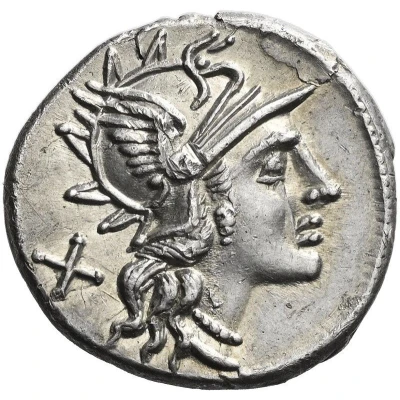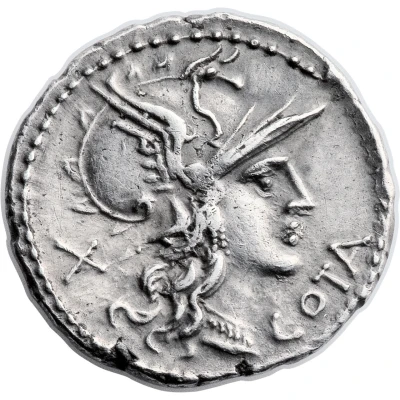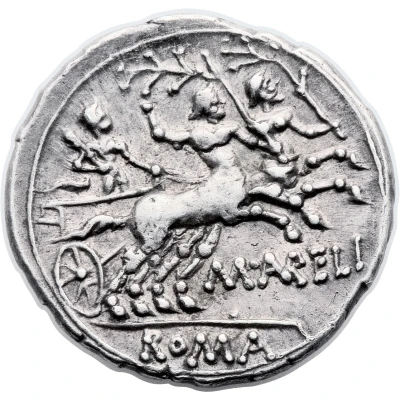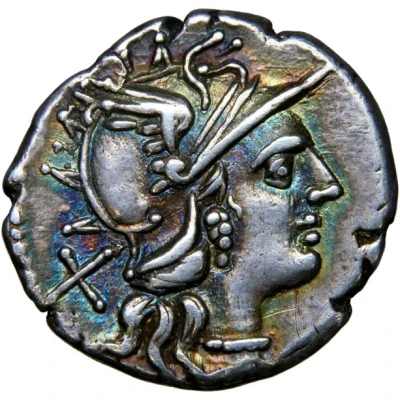
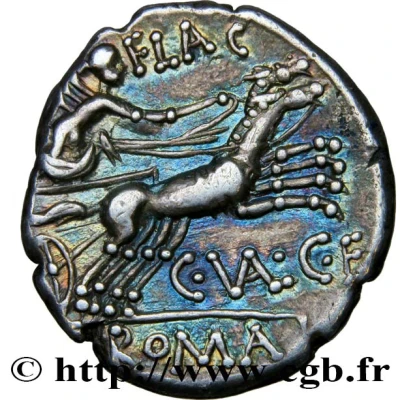

© CGB
Denarius Valeria: C. Valerius C.f. Flaccus; X / FLAC C•VAL•C•F 140 BC
140 BC year| Silver | 3.81 g | 18.86 mm |
| Issuer | Rome › Roman Republic (509 BC - 27 BC) |
|---|---|
| Period | Republic (509 BC - 27 BC) |
| Type | Standard circulation coin |
| Year | 140 BC |
| Value | Denarius (1) |
| Currency | Denarius of 10 Asses (221 – 141 BC) |
| Composition | Silver |
| Weight | 3.81 g |
| Diameter | 18.86 mm |
| Shape | Round (irregular) |
| Technique | Hammered |
| Orientation | Variable alignment ↺ |
| Demonetized | Yes |
| Updated | 2024-10-06 |
| Numista | N#234667 |
|---|---|
| Rarity index | 93% |
Reverse
Victory in a biga facing right, holding whip and reins
Script: Latin
Lettering:
FLAC
C•VAL•C•F
ROMA
Comment
This coin is very similar to RRC#228/1 but with one difference. On the obverse behind the depiction of Roma, 228/2 has the value mark X, whereas 228/1 has the scarcer value mark XVI.Interesting fact
The Denarius coin was used as a standard currency in ancient Rome and was equivalent to 10 bronze asses or 4 sestertii. It was first introduced in 211 BC and remained in circulation until the fall of the Roman Republic in 27 BC. The coin's design often featured images of Roman gods and goddesses, as well as various other symbols and motifs. In this particular coin, the obverse side features the head of the goddess Valeria, while the reverse side depicts a warrior holding a shield and spear. The coin's silver content and weight were also carefully regulated to ensure its authenticity and value. Overall, the Denarius coin played a significant role in the Roman economy and remains an important artifact for historians and collectors today.
